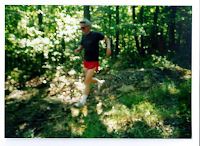 Thomas P. Moran is one of the pioneers establishing the field of human computer interaction in computer science with the seminal book, The Psychology of Human-Computer Interaction , in 1983. He was a manager of the user interface and collaborative systems group at Xerox PARC , and he was the founding director of EuroPARC (current "XRCE") , in Cambridge. He has led research teams developing innovative systems for informal interaction, exploring techniques in hypertext, media space, multimedia, pen-based and vision-based interaction; and he has also developed several analytic models and design methods for HCI. The most influential work there I think is the work on GOMS model with Stuart Card and Allen Newell.
Thomas P. Moran is one of the pioneers establishing the field of human computer interaction in computer science with the seminal book, The Psychology of Human-Computer Interaction , in 1983. He was a manager of the user interface and collaborative systems group at Xerox PARC , and he was the founding director of EuroPARC (current "XRCE") , in Cambridge. He has led research teams developing innovative systems for informal interaction, exploring techniques in hypertext, media space, multimedia, pen-based and vision-based interaction; and he has also developed several analytic models and design methods for HCI. The most influential work there I think is the work on GOMS model with Stuart Card and Allen Newell.He is currently a Distinguished Engineer at IBM Almaden Research Center near San Jose, California, and is leading a multi-lab research program on Unified Activity Management, which is exploring how to make activity the central organizing construct in the IBM Workplace platform. The Unified Activity Management (UAM) project is defining a new organizing framework for supporting collaborative work around the concept of human activity by creating a Unified Activity representation, architecture, and user experience. Activities are what we do everyday. An activity is any coherent set of actions that we take towards some end, be it specific or vague. Effective business activities involve a combination of formal and informal work, often spread among a variety of people, tools, systems and service providers. An explicit activity object is needed to represent the collection of relationships that emerge between people, the artifacts they work on, their communication and coordination, the calendar, and the business processes they use to complete their work. As presented in the below figure, the unified activity management integrates formal business processes with the informal collaborations needed to accomplish business objectives.



I was also part of this program lead by Tom when in IBM. I helped explored the collaborative activity patterns as building blocks in workplace and helped design the activity centered project management tool for IBM Workplace (former Lotus Workplace). I published two papers as the first author on these threads.
Tom Moran is the founding Editor of Human-Computer Interaction. In 2003 he was inducted as a Fellow of the Association for Computing Machinery. In 2004 he won the CHI Lifetime Achievement Award . He is a good friend of my adviser Jack. They coauthored the book Design Rationale: Concepts, Techniques, and Use and had many other collaborations.





.jpg)





